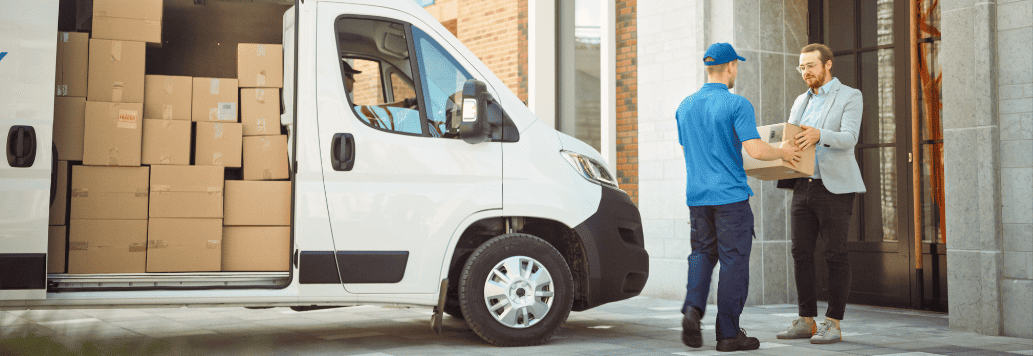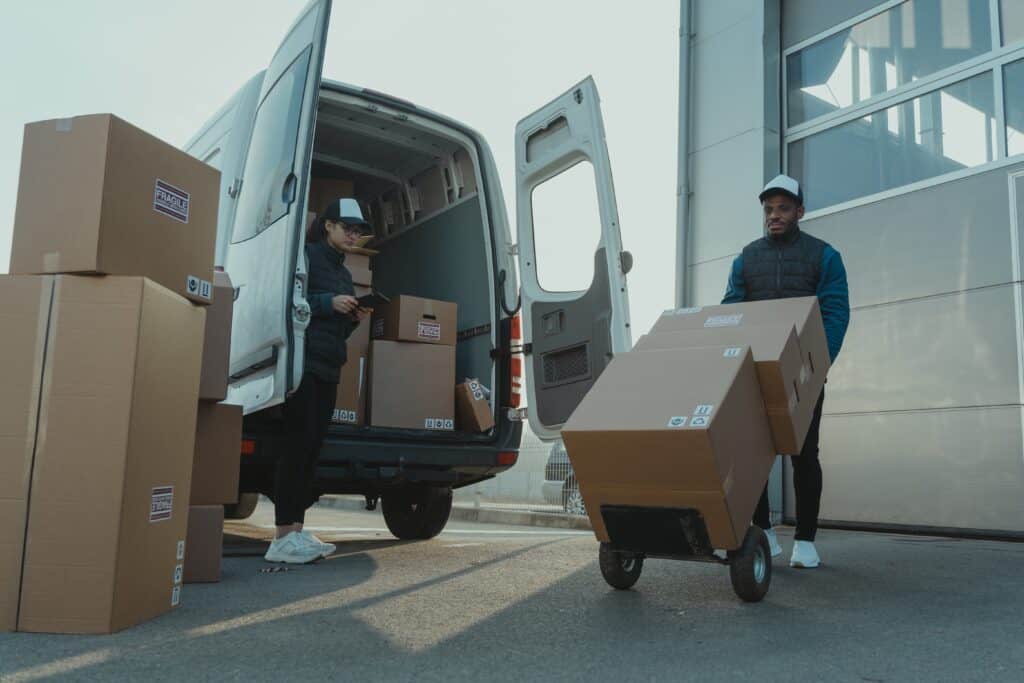
Cost-Cutting Strategies for the Last Mile: How You Can Reduce Last-Mile Delivery Costs for Your Customers

Wise Systems
Cost-Cutting Strategies for the Last Mile: How You Can Reduce Last-Mile Delivery Costs for Your Customers

Wise Systems

In the dynamic world of logistics, operations, and supply chain management, the high-wire act of balancing cost reduction with stellar customer satisfaction is a challenge you know all too well. Nowhere is this issue more palpable than in the last-mile delivery sector, notorious for eating into profitability due to its inherent complexities and variable costs.
With the application of strategic cost-cutting measures, it’s possible to trim the excess off your last-mile delivery costs, boosting profitability without sacrificing service quality. In this post, we pull back the curtain on some powerful strategies your business can employ to wrestle with and ultimately overcome the difficulties of last mile delivery.
In this article:
- Inventory of Last Mile Delivery Costs
- Route Optimization Tools
- Strategic Fleet Investments
- Advanced Analytics
- Telematics for Coaching
- Outsourcing
- Cluster Deliveries
- A Path to Cost Efficiency for the Last Mile
- Frequently Asked Questions
Inventory of Last-Mile Delivery Costs
Remarkably, last mile delivery is estimated to account for 53% of total supply chain costs. This disproportionate percentage shows the hurdles associated with this segment of the chain while also highlighting the vast potential for optimizing last-mile delivery costs.
Understanding the different types of costs associated with last mile delivery is the first step toward reducing last-mile delivery costs. It’s a complex and interrelated web of costs, but by shining a light on each cost factor, you’re in a prime position to formulate targeted strategies that whittle down these costs without compromising service quality:
- Fuel Costs: One of the primary expenses in last mile delivery is the cost of fuel. The distance between the distribution center and the customer’s doorstep is further complicated by inefficient routing, traffic, and repeated delivery attempts.
- Labor Costs: Labor cost not only includes wages and benefits, but also the time spent on the road, breaks, and overtime.
- Vehicle Maintenance and Depreciation: Delivery vehicles endure wear and tear and require regular maintenance, including tire rotations, oil changes, and brake repairs. Vehicles also depreciate over time, meaning your investments are constantly losing value.
- Insurance Costs: Vehicle insurance includes liability insurance, damage insurance, and in some cases, goods in transit require insurance.
- Warehousing and Inventory Costs: These costs accumulate from having a physical location to store goods before they are delivered. They include rent or mortgage, utilities, security, and clearance, as well as inventory costs such as storage, handling, and shrinkage.
- Technology Costs: Investing in technologies for route optimization, fleet tracking, and data analytics is essential but requires an initial investment and ongoing costs for updates, maintenance, and staff training.
- Failed Deliveries: Each failed delivery attempt increases fuel and labor costs and may require customer returns or exchanges.
- Regulatory Compliance: There are costs associated with adhering to various local, regional, and national regulations related to vehicle emissions, driver working hours, and health and safety standards.
1. Route Optimization Tools
Optimizing delivery routes can be instrumental in reducing last-mile delivery costs. Inefficient routing leads to unnecessary fuel usage and prolonged delivery times, both cutting into the bottom line. Embracing advanced technologies that assist with routing can result in considerable savings over the long term:
- Route Optimization Software: The algorithms in next-generation route optimization software solutions generate the most efficient route possible and reduce last-mile delivery costs. They account for variables like traffic, delivery windows, and vehicle capacity. AI-based route optimization software programs that use real-time and historical data can dynamically adapt to changes, providing alternate routes if unexpected road incidents occur.
- Automated Dispatching and Scheduling: Software solutions can automatically assign delivery jobs to drivers based on factors like proximity, skill level, and vehicle load, and can handle larger order volumes than can be routed manually. In addition to saving routers time to build schedules, these systems This reduces idle time, balances workloads across drivers, and ensures the best utilization of resources, resulting in lower last- mile delivery costs.
- Fleet Tracking/Telematics: Integrating real-time fleet tracking and telematics into your operation, lets you monitor the exact location of each delivery vehicle. This technology provides insights into driver behavior, allows for route adjustments, and offers a wealth of data for future route planning.
- GPS Systems: Global Positioning Systems can provide real-time traffic updates and offer alternative routes to avoid congestion or accidents. GPS can also accurately pinpoint delivery locations so staff aren’t left guessing which address is the actual customer’s location.
2. Strategic Fleet Investments
Intelligent fleet investments play a key role in cutting down last-mile delivery costs. The vehicle chosen for delivery can significantly affect both fuel consumption and ongoing maintenance costs.
A well-thought-out approach to fleet management can field significant savings and also contribute to a greener supply chain. Here are some important points to consider:
- Vehicle Size: Depending on the nature of your goods and the areas you serve, opt for smaller, more fuel-efficient vehicles when possible. Smaller vehicles are easier to maneuver, especially in densely populated urban areas with narrow lanes and limited parking.
- Fuel Efficiency: Look for vehicles with high miles-per-gallon (MPG) ratings, and consider those with start-stop technology, which automatically shuts off the engine when idle to save fuel.
- Electric or Hybrid Vehicles: While the upfront costs of electric or hybrid vehicles may be higher, the lower running costs can provide a better return on investment in the long run.
- Maintenance Costs: Consider vehicles known for reliability and lower maintenance costs. Regular maintenance, such as oil changes, tire rotations, and brake replacements, can add up quickly, especially for a large fleet.
3. Advanced Analytics

Many last-mile routing and dispatching software platforms include fleet analytics offerings that give you insight into fleet and driver performance. In addition, tools like Microsoft Power BI or Tableau can process large sets of logistics data to identify patterns, trends, and inefficiencies that may not be apparent to human auditors. This can help in identifying cost-draining elements in your delivery process and creating targeted strategies to address them.
4. Telematics for Coaching
Telematics systems can provide insights into driver behavior, such as speeding, harsh braking, or idling, which can be used to provide targeted coaching. By coaching drivers to be more efficient and adopt the best handling and driving practices, you can further cut last-mile delivery costs. Drivers who are skilled at managing their time and navigating local routes can significantly streamline delivery times and fuel usage.
5. Outsourcing
Outsourcing certain operations can be an effective strategy, especially for smaller businesses. Collaborating with third-party logistics providers (3PLs) can offer economies of scale. This approach enables businesses to leverage the expertise and resources of specialized providers and allows for greater focus on core operations.
6. Cluster Deliveries

Instead of delivering one package to a single location at a time, cluster delivery involves grouping multiple deliveries going to the same or nearby locations together. This strategy is typically employed in areas where many recipients live close together, such as city centers, apartment complexes, and business districts.
Cluster deliveries reduce the total distance that delivery vehicles travel, thereby lowering fuel consumption and total last- mile delivery costs. And since more packages are being delivered within the same timeframe, your company can handle a larger volume of deliveries.
A Path to Cost Efficiency for the Last Mile
From leveraging the power of technology in route optimization and data analytics to smarter allocation of resources and smart fleet investments, each strategy provides a valuable piece of your cost-cutting blueprint.
But implementing these strategies is not a solo voyage. To truly harness their power, you need the right tools and technologies as part of your trusted toolkit.
That’s where solutions like the Wise Systems delivery automation platform become invaluable. The system is built around Wise Systems’ AI-driven Dynamic Optimization Engine (DOE), which dives beneath the surface of your operations, analyzing data in real time to provide intelligent, actionable insights from optimizing routes to tracking deliveries. It’s a dedicated platform designed to refine and streamline your last-mile delivery operations.
With Wise Systems, you can build a more efficient, more effective, and ultimately more profitable last-mile delivery operation. Tailored to tackle your specific challenges, Wise Systems is dedicated to your success. Request a demo with Wise Systems to begin your journey towards a more cost-efficient last mile.
Frequently Asked Questions
How can I reduce my last-mile delivery costs?
Reducing last mile delivery costs can be achieved through several strategies:
- Route Optimization: Use advanced algorithms and software to plan efficient routes that minimize distance, fuel consumption, and delivery time. For instance, the Wise Systems delivery automation platform leverages artificial intelligence (AI) to automate and optimize your delivery operations.
- Maximize Fleet Utilization: By ensuring that your vehicles are used to capacity and that your routes are tight, you may be able to reduce the number of vehicles required to manage your deliveries.
- Cluster Deliveries: Use software that will combine multiple deliveries in the same area to reduce costs and increase efficiency.
- Leverage Local Warehouses or Distribution Centers: Having products closer to the end customer can drastically reduce delivery distances and costs.
- Use Technology for Real-time Tracking: This helps identify and correct inefficiencies, and can help avoid costly redeliveries.
What is the solution to the last-mile problem?
The solution to the last-mile problem typically involves multiple strategies, which can vary depending on the specifics of the business and region:
- Advanced Route Planning: Use data and technology such as Route Planner from Wise Systems to optimize routes and schedules.
- Decentralized Fulfillment: Moving inventory closer to customers by using local warehouses or distribution hubs.
- Micro-fulfillment Centers: In urban areas, these small-scale warehouses can help speed up delivery and reduce costs.
- Alternative Delivery Options: This could include collection points, parcel lockers, or using local retailers as pick-up points.
- Investment in Technology: Technologies such as drones, autonomous vehicles, or advanced logistics software can improve last mile delivery efficiency.
How do you optimize last-mile delivery costs?
Optimizing last-mile delivery costs involves a mix of planning, data analysis, and technology.
Implement software that can manage, track, and analyze your delivery processes and maximize fleet utilization. By reducing the amount of time planners spend building routes, they’re able to better manage exceptions and drive customer service.

